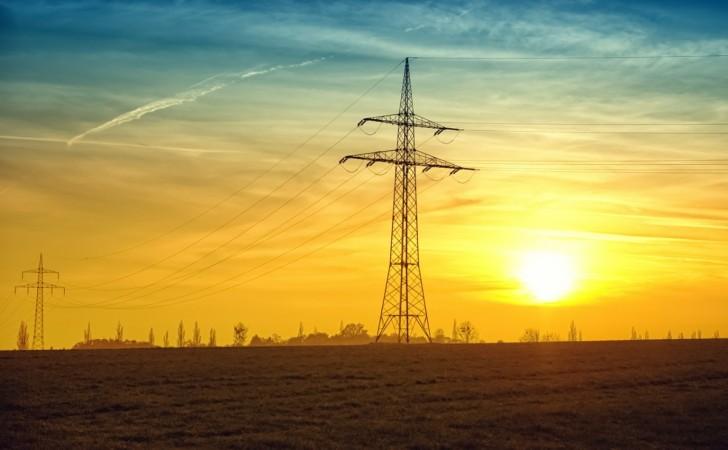
It is the clear case of a paradox. At a time when the country is yet to power-connect its 300 million people, its thermal power plants are running at sub-optimum levels for over a year or so.
Also read: India needs to tread cautiously in its solar path
A steep fall in plant load factor (PLF) could be a point of reference to begin with. PLF, or average capacity utilisation of a thermal power plant, saw a dramatic fall from over 70 percent a couple of years ago to the current level of around 50 percent. Interestingly, while peak PLF period was coal-starved days, currently the cumulative stocks with power plants and miners would go over 75 million tonnes.
An Asocham-Crisil joint study this week said despite significant progress in the power sector in the past three years resulting in improved access to electricity and better financial conditions, the operational performance of distribution utilities remained a grave concern.
The study also noted that PLF was estimated to remain in lower bands – around 60 percent until 2018-19.
Slide in PLF can be directly linked to the lack of demand from distribution utilities (discoms) because of their ever deteriorating financial health. According to government estimates, they had accumulated a debt of over $49 billion until March 2015, while their losses were in excess of $40 billion.
The Electricity Act 2003 came with a number of reforms such as allowing private participation and formation of an independent regulator. The act was followed by a bailout package for discoms and they were cleared of their existing debts as of then. However, a decade down the line they were in a deeper crisis that almost threatened to derail the little progress they made in time.
Thus, the government of India rolled out a new scheme in 2015 to assuage their distresses – Ujjwal Discom Assurance Yojana (UDAY). The scheme allows state governments, which owns maximum number of discoms, to take over 75 percent of their debt and pay back lenders by selling bonds. For the remaining 25 percent, discoms will issue bonds at the prevailing market rates.
A much more structured reform package, UDAY, is beginning to see success, the government says. As of now, 27 states have joined the scheme and the remaining ones are expected to follow. Union Coal, Power and Renewable Energy Minister Piyush Goyal termed the scheme a 'super success.' "Those who worked hard under UDAY reaped benefits," he said in an interview.
The government has an ambitious plan of taking electricity to every home by 2022. It is seemingly sincere in its efforts and doing all it can to mitigate the woes in the power sector.
Discoms are happy about the restructuring package. They will now sign power purchase agreements (PPAs) with more generators who are idling now for want of it. In a way, financially sound discoms any day are a safe bet for generators to do business.
It is estimated that about 20,000 MW of generators don't have regular PPAs with discoms. At present they sell power occasionally at power exchanges. The government says about 70,000 MW of generation capacity is currently under different stages of implementation and will be added to the main stock by the year 2023.
Now, a mere re-restructuring programme alone will save the power sector of all its agonies?
Two things immediately come to mind.
First, the debate on power sector purportedly avoids economic viability of discoms in the absence of an effective end user recovery mechanism that helps them earn enough to cover the costs.
Second, short-term political considerations most often prevent the government an upward revision of electricity tariffs periodically.
A simple surveillance around places not far from the national capital will stand for cases in the first category. Meter-less houses, metre-bypassed connections and the way power monitoring squads are attacked will go a long way in defending my point.
In a personal conversation, a key official with the Central Electricity Authority once told me that in some states (wouldn't name them here for fear of controversy) electricity theft was as high as 60 percent.
Further, what Dipak Thakkar, then CEO of Torrent Agra, a private power distribution company that electrifies the city of Taj Mahal, told me may add another interesting layer to this. That the way the local journalists threat to publish damaging reports of the company if it didn't yield to their pressure-bargaining for lowering bill amounts for people who are near and dear to them.
The case of bijli adalats (a legal mechanism prevalent in several states to address issues such as disputes in electricity billing) reducing the quantum of amount to meagre sums is another case in point.
In a recent interview to Business Standard what minister Goyal said could be perhaps an insight into a traditional Indian mindset that expects electricity prices to remain cheap forever.
"Today the nation will not pay a very high price for power. Nobody will pay more than Rs 3-3.5 (around $55 per MWh) for power," Mr Goyal said.
A meaningful dialogue in the power sector should aim to address these core issues apolitically. Otherwise, reforms will be like digging a new hole to fill in the old one.
(Pradeep Kaimal is a Delhi-based energy journalist and analyst)








![India Auto Roundup: Maruti Suzuki, Mahindra have exciting launches in November [details here]](https://data1.ibtimes.co.in/en/full/805520/india-auto-roundup-maruti-suzuki-mahindra-have-exciting-launches-november-details-here.jpg?w=220&h=138)








